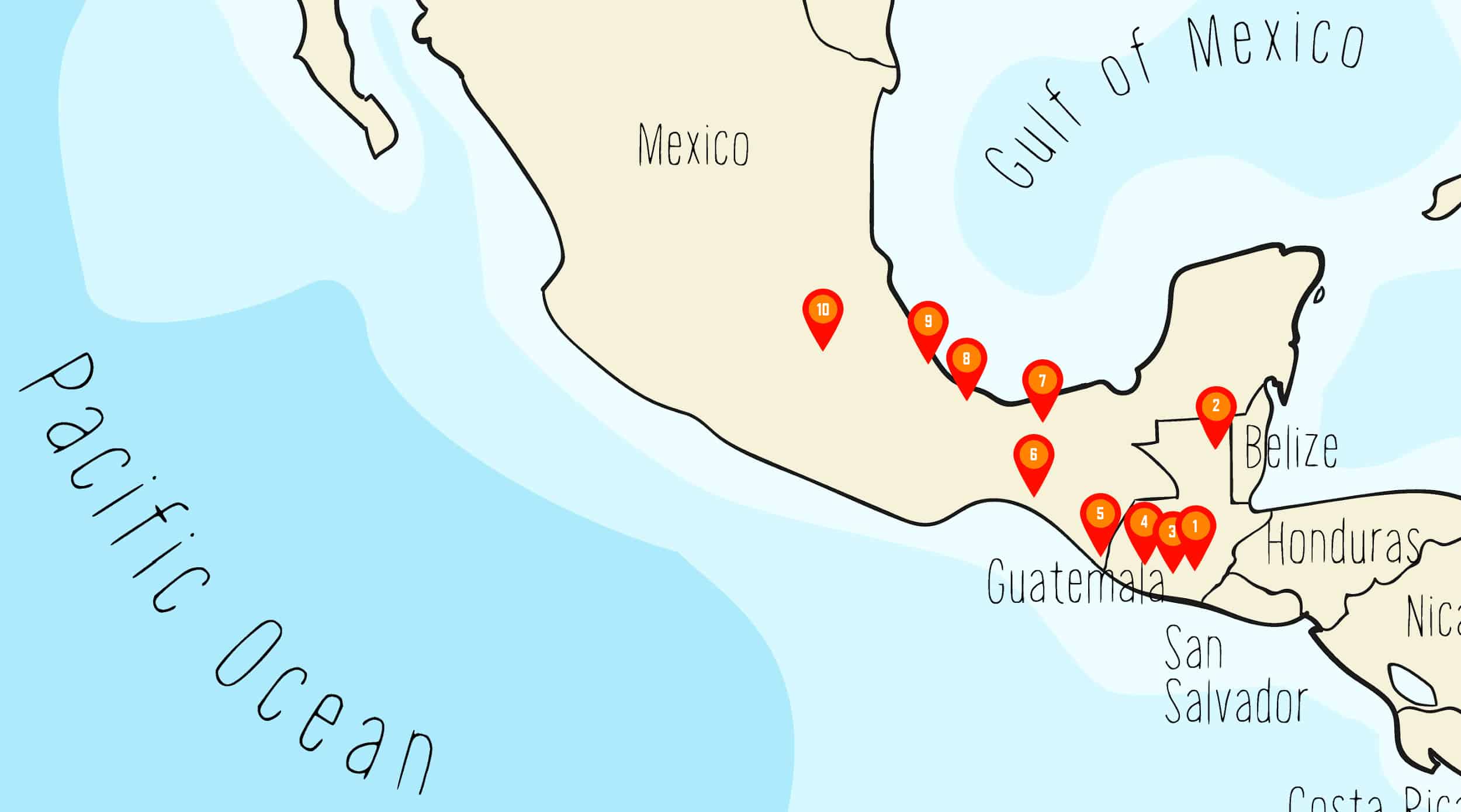
Guatemala City, Guatemala
The tour kicks off in Guatemala City, Guatemala's capital and largest city. Humans first settled in the area around 1500 BCE, when the Maya built the city of Kaminaljuyu. It eventually collapsed, in 300 CE. Later, conquistadors built a town around a kilometer from the ruins, and that town eventually developed into modern-day Guatemala City. The tour visits artifacts from Kaminaljuyu ruins now housed in the National Museum of Archeology.
Tikal Archeological Area, Guatemala
Moving on, the tourers visit a Maya archeological zone to the north of Guatemala, Tikal, home to one of the most powerful kingdoms of the Classical Maya Period (200-900 CE). The Tikal ruins cover an area of more than six square miles. Book of Mormon tours believes the area corresponds to the East Wilderness described in the Book of Mormon, where many Nephite cities were built.
Lake Atitlán, Guatemala
The next stop is Lake Atitlán, the deepest lake in Central America, and the Kaminaljuyu ruins themselves; the area around Lake Atitlán is populated by villages in which Maya culture remains prominent. Mormon tourers believe that Kaminaljuyu was settled by Nephi in the 6th century BCE, while Lake Atitlán has been proposed as being the Waters of Mormon, where the prophet Alma baptized hundreds of Mormons as described in the book of Mosiah.
Quetzaltenango, Guatemala
Quetzaltenango, "place of the quetzal bird," is Guatemala's second-largest city and was also originally a Maya settlement that was later taken over by conquistadors. It's also home to Guatemala's second Church of Jesus Christ of Latter-day Saints temple (the first is in Guatemala City). The trip to Quetzaltenango passes through an area that some Mormons consider the Valley of Alma, also described in the book of Mosiah.
Tapachula, Mexico
The tour crosses into Mexico, landing in Tapachula in the southeast of the state of Chiapas. The area was inhabited by the Olmec people, Mesoamerica's earliest civilization, and the city itself was established by the Aztecs in the 13th or 14th century. This stop is the jumping-off point for several days in Tuxtla Gutiérrez, Mexico, an area rich in ruins and locations thought to play an important role in Book of Mormon narratives.
Tuxtla Gutiérrez, Mexico
Tuxtla Gutiérrez is the capital and largest city in Chiapas. It was first settled in the Pre-Hispanic era by the Indigenous Zoque people before being invaded by the Aztecs, and later by the Spanish. The city itself likely dates to the 17th or 18th century CE. Ruins and archeological zones abound in the area: it's home to Izapa and its engraved stele, believed by some Mormons to depict the Tree of Life described in 1 Nephi; it's the area where Zarahemla is believed to have been; and its regional museum contains many pre-Classic Maya artifacts believed to be or to record Book of Mormon events.
Villahermosa, Mexico
Next on the agenda is several days in and around Villahermosa, the capital and largest city of the state of Tabasco. The city itself was founded by the Spanish in the mid-16th century, but the region is home to many Olmec and Maya archeological sites and monuments, including Palenque. For Book of Mormon geographers, the Chiapa di Corzo zone is believed to have been home to the city of Sidom, the Grijalva River along which Villahermosa sits may have been the River Sidon, and Villahermosa itself may have been the "land of many waters," as detailed in the book of Mosiah. Tabasco is also home to La Venta, an outdoor museum where you'll find several of the colossal stone Olmec heads that may or may not represent the Book of Mormon's Jaredites.
Catemaco, Mexico
Catemaco is in the south of the state of Veracruz, and was also once dominated by the Olmec civilization. The route from Villahermosa to Catamaco is significant for Book of Mormon geographers for passing the area thought to be home to the Hill Shim, mentioned in both the books of Mormon and Ether. According to the Church, a figure named Ammaron hid the sacred records of the Nephite people in Shim, and those records were later retrieved and became part of the Book of Mormon.
Veracruz, Mexico
On to Veracruz: the largest city in the state of the same name, on Mexico's Gulf Coast, founded by conquistador Hernán Cortés in the early 16th century. The state of Veracruz was originally home to several Indigenous cultures, with the Olmec being most prominent in southern Veracruz. As in much of this part of the world, the area later came under the control of the Aztec civilization before ultimately being taken over by Spain. It is home to multiple locations thought to be significant for the Book of Mormon, including the hill Cumorah where the final battle between the Nephites and Lamanites occurred.
Mexico City, Mexico
The final stop is Mexico City. Along with visits to local shrines and museums, tourers visit Teotihuacan, a Mesoamerican city about 25 miles northeast of the city first settled in 600 BCE and home to some of the most significant pre-Hispanic monumental structures, the pyramid Temples of the Sun and Moon. It was one of the largest settlements anywhere in the ancient world, with a population of 125,000+ at its height in the 4th and 5th centuries CE. There are competing theories as to why the city declined, but it eventually fell to the Aztecs. For Book of Mormon geographers, Teotihuacan may have been the city built by King Jacob, as described in 3 Nephi.
